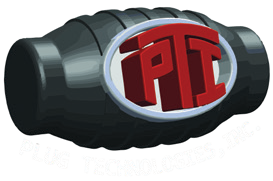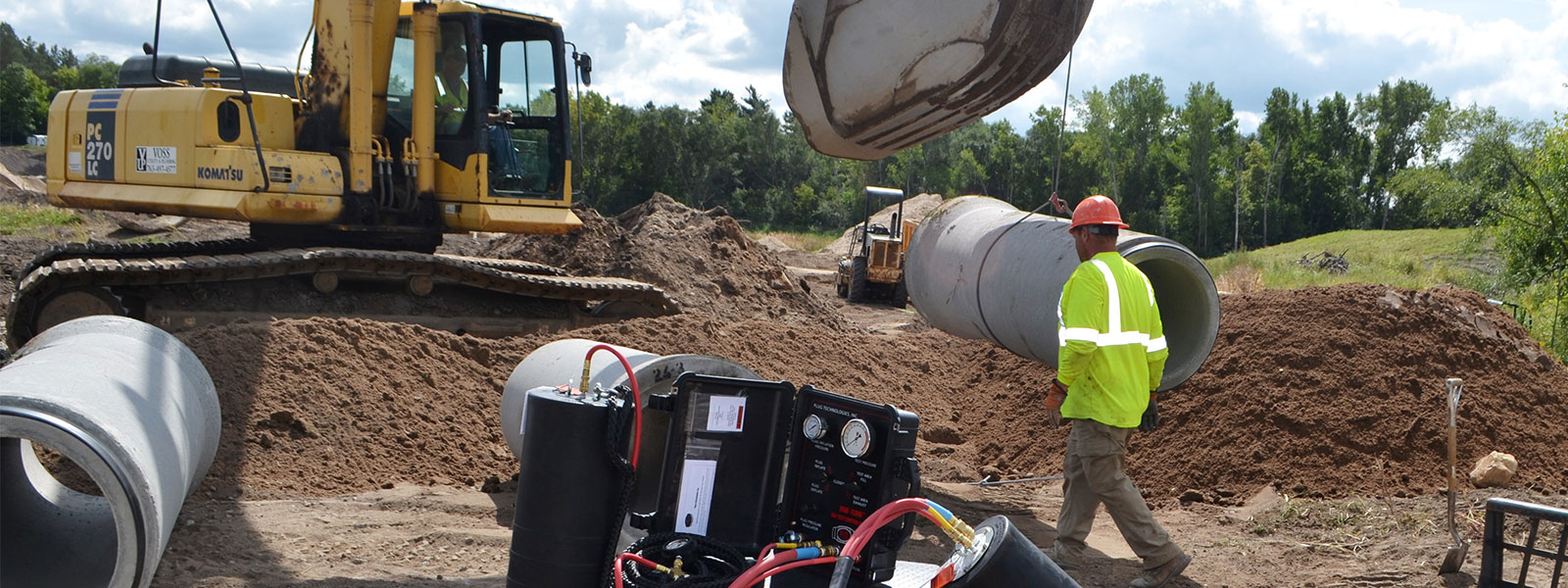Safety Information
Expert Advice for Using Pneumatic Plugs and Gauges.
Working with pipe plugs can be dangerous. Please take it seriously
Working near pneumatic pipe plugs is extremely dangerous and can result in serious bodily injury or even death. According to OSHA standard 1926.21(b)(2), “The employer shall instruct each employee in the recognition and avoidance of unsafe conditions and the regulations applicable to his work environment to control or eliminate any hazards of other exposure to illness or injury.”
Our safety instructions are written as a guide to help train and educate employers and their employees on the safe use of our pneumatic pipe plugs.
Be Aware of and Avoid the Danger Zones
Determine the Correct Plug Size
Calculate and Monitor Back Pressure
Example: If a plug is holding a column of water 15 feet high, then the plug would be holding back approximately 6.50 PSI (15 x .4335 = 6.5025 PSI).
When holding back air, back pressure must be monitored using a properly functioning pressure gauge. Users must monitor the back pressure to ensure that it does not exceed the back pressure rating of the pipe plug being used. All our pipe plugs have back pressure ratings molded onto the plug. The back pressure ratings are also included in our product catalog and can be found at our website, www.plugtechinc.com
Temperature and Chemical Considerations
Personal Protection Equipment
All users, without exception, must wear personal protection equipment when using Plug Technologies pipe plugs, including, but not limited to: safety glasses, hard hats, hearing protection, and safety boots.
Proper Cleaning of the Pipe
Proper Blocking/Bracing of the Pipe
Proper Placement of the Plug into a Pipe
Example: If you are installing a 12” plug it should be inserted a minimum of 12” inside of the pipe being plugged.
Strict compliance with this minimum plug insertion distance should prevent the pipe plug from protruding outside of the pipe and losing 100% contact with the pipe wall.
Proper Inflation of the Plug
WARNING
Pipe plugs should never be inflated to full inflation pressure unless they are properly installed inside of a pipe. Failure to have a pipe plug contained inside a pipe during inflation could result in serious bodily injury or even death.
Proper Deflation and Removal of the Plug
WARNING
Deflation of a pipe plug while in one of the danger zones could result in serious bodily injury or even death.
Never Us a Defective Pressure Gauge
Regular Inspection of Plug for Damage
Proper Storage and Cleaning of a Plug
Have a question?
Give us a call today. 855-758-4489

